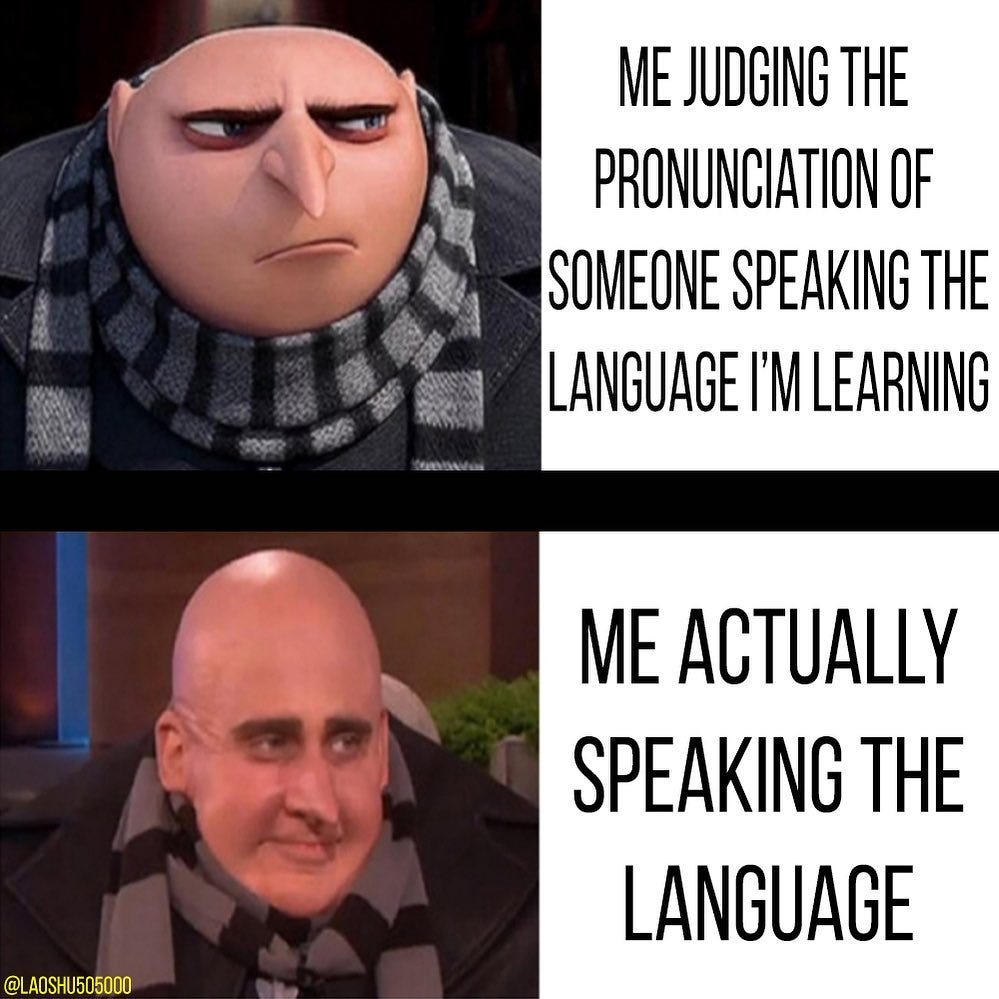Are you tired of the language plateau?
A powerful switch you should make TODAY
Welcome, aspiring polyglots! Comprehensible input is a term many language learners run into with enough time. Unfortunately, much of the best language learning material available is geared toward decoding or providing comprehensible input. This is great for developing the ability to understand and process incoming language, but it creates potential holes in your abilities when it comes time to start speaking. Sometimes you don’t need more comprehensible input, you need practical output.
Stop reading in your target language
Towards the end of class, my best students all begin working on something that most language learners don’t even consider: reading in their native language. While counter intuitive, there are serious benefits that are worth looking into when you are feeling stagnant. By reading in your native language you will be able to prompt yourself to start thinking about how to phrase things in your target language. At first it takes deliberate effort, but that’s why it’s worth starting.
Books is not where this ends, either. Listening to your favorite creators on YouTube or watching your favorite movie will also work. Over time the goal is to always be thinking about how to convert one language to the next. The ability to do it one way is fantastic, but complete language acquisition requires that you master both input and output. This exercise is potent as there are few things that will make it clear how many ways there are to say the same thing.
Taking the time to do this even once per day will start the process of habit development. If you can make it through 21 days you will develop the habit and, in that, integrate your languages into your lifestyle. Complete integration will demand a bit more work, though. Since this journey will be arduous, you need to build systems to keep yourself motivated. Nothing does this quite as well as writing down the things you are learning and doing.
Writing your thoughts down
Translating media is helpful because it saves you from having to think of the sentences and all but guarantees you are using material that will make it easier to communicate with native speakers. Journaling removes the certainty factor, but it allows you space to make mistakes without judgement. After all, who is ever really going to see it to be able to judge? A journal, a diary, is not something you are likely to share with anyone anyway, so why not try and keep records in a new language?
For those who struggle to think of what to write, which I think we can all relate to at one time or another, a perfect option is to take notes on the things you are watching and listening to throughout the day. Don’t just consume. Production and creation helps to cement in the new information. Each of these steps is an evolution, but that does not mean the others are worth leaving behind. One day you will be translating your thoughts, but journaling and note taking will remain powerful tools.
The final step is translating your own thoughts. This is an opportunity to practice anything and everything, especially if you are willing to get lost in your own thoughts. Your way to think about things is completely unique to you. Mastering your own speech means mastering your own thought processes and by translating your own thoughts whenever you can you are working towards precisely that end. That’s all within the home, though, there are countless opportunities to translate in the real world every single day.
Translation in the real world
Eventually, and as soon as possible, you want to be in a place where you are working 50% with your native language and 50% with your target language. This isn’t indefinite either, once you hit a certain threshold you can switch to a maintenance program which is far less demanding. However, in order to get to that place you have to lay the foundation and build something beautiful upon it. As with all of the most important things, the only way out is through.
This holds true for conversations as well because you will quickly discover, if you have not already, that you aren’t going to be able to say things the way you want to say them. Whether it is because you lack the requisite vocabulary, don’t understand the grammar necessary, or it is simply impossible in your target language is irrelevant. Everyone experiences this struggle. Fighting for new and, possibly even improved, ways to say things is going to set you up for linguistic success.
Writing all of these things down will help you improve as you come back and review then improve every time. Seeing your mistakes hits different than hearing your mistakes. If nothing else, seeing them written down makes them real. What is real can be addressed. It is not always enjoyable to go back and revise, but it is always easier to polish than it is to build.
Conclusion
Combining these things may seem counterintuitive, but they are sure fired ways to get yourself producing speech in your new language. Balance is key. Too much input and you will struggle with output. Too much output and you will struggle with input. Finding a balance that works for you, where you are able to target your weaknesses while leveraging your strengths will make all the difference when it motivation begins to fade.
Few things are as motivating as feeling and seeing progress week over week. In order to see that progress, of course, you are going to have to keep track of the things you are doing. No one wants to write, it’s never fun to see the problems you still have. But without knowing what they are, you will find them impossible to fix. Catch your errors early by keeping a written log to begin production immediately. It will be difficult, but you can do difficult things and be great. So get out and do some difficult things and become great. I am rooting for you.







